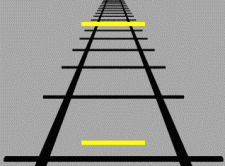

Subjective constancyorperceptual constancy is the perception of an object or quality as constant even though our sensation of the object changes.[1] While the physical characteristics of an object may not change, in an attempt to deal with the external world, the human perceptual system has mechanisms that adjust to the stimulus.[2]
There are several types of perceptual constancies in visual perception:


The facts behind color-constancy phenomena...are that we require fine color discriminations less frequently than gross discriminations, and when gross discriminations enable us to maintain focus on objects of prime interest, we 'systematically overlook' differences beyond the necessary degree of fineness. The mechanism which accomplishes this 'systematic overlooking' is the information-processing system of the organism, and the principle according to which it is accomplished is that this system never expands more of its capacity on a given perceptual task than is necessary according to the current needs and interests of the agent.
— Sayre[6]
Rats’ perceptual reports about the relative location of external objects are hardly affected by strong environmental winds. This perceptual report constancy was shown to be achieved via motor control, whereby the perceptually-relevant sensory variables (the ‘proximal stimulus’) is maintained relatively constant.[10]